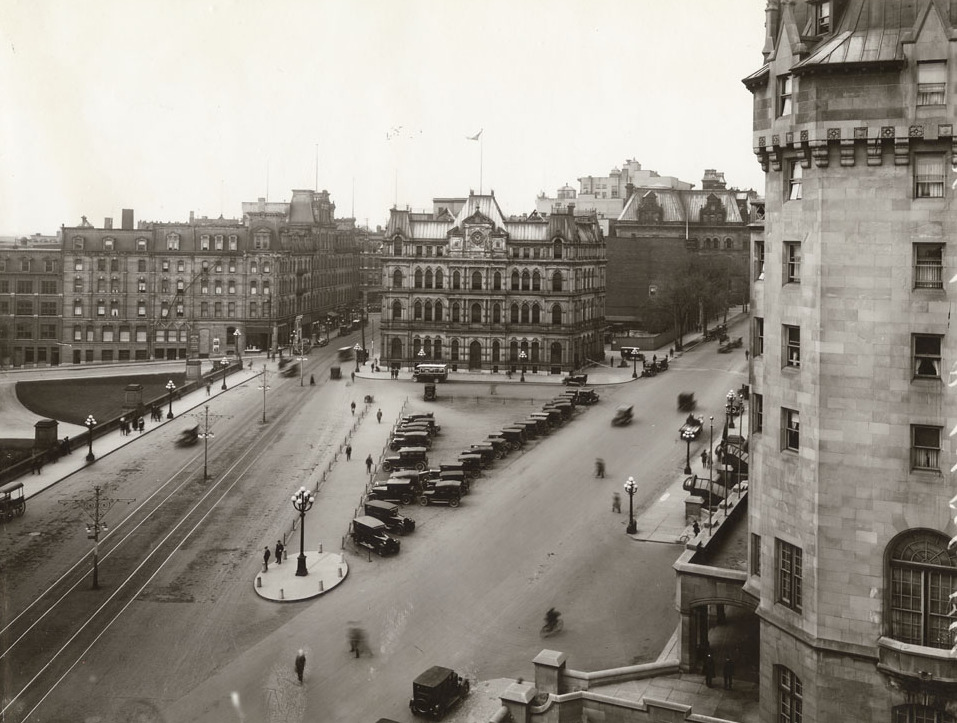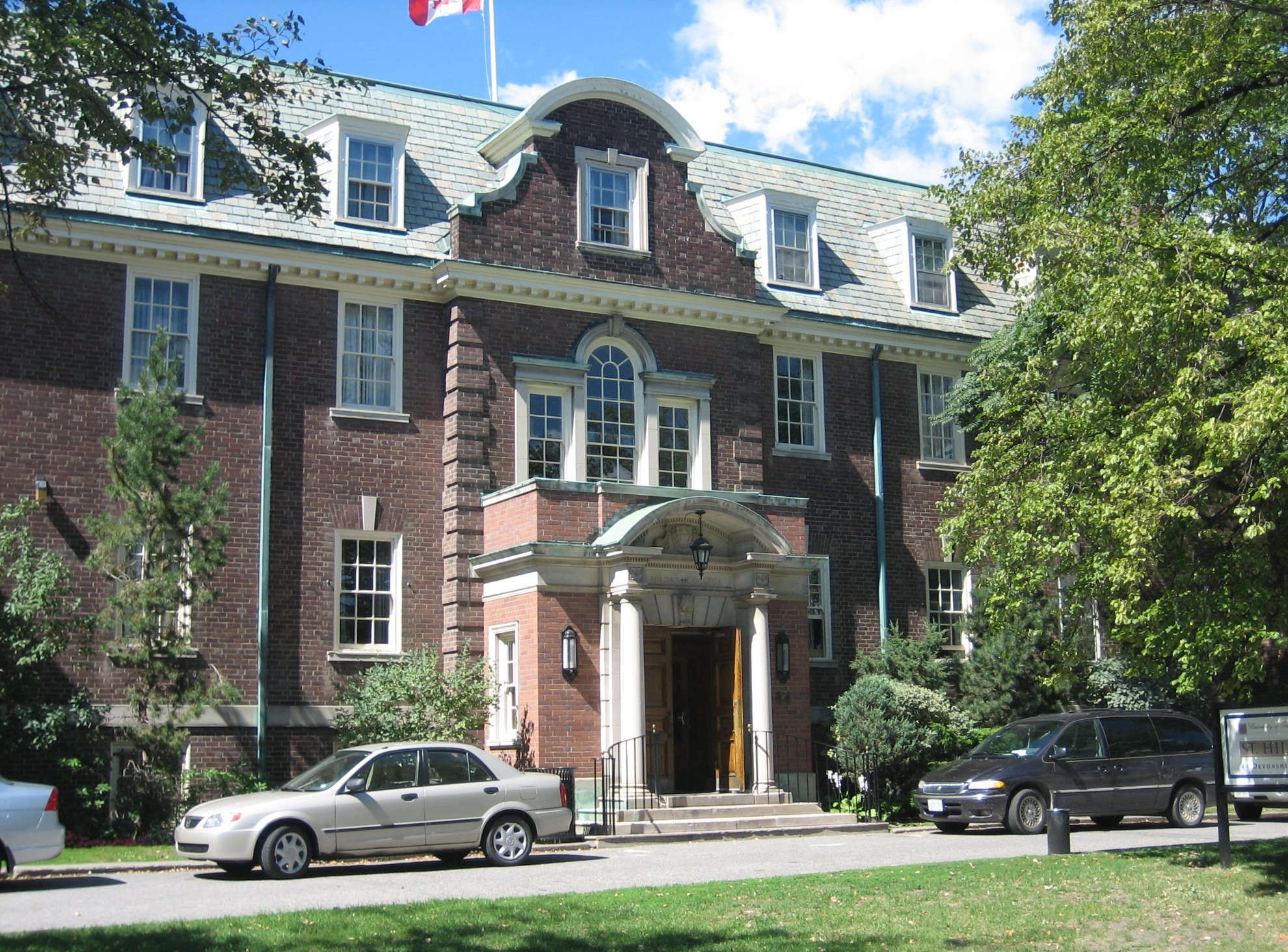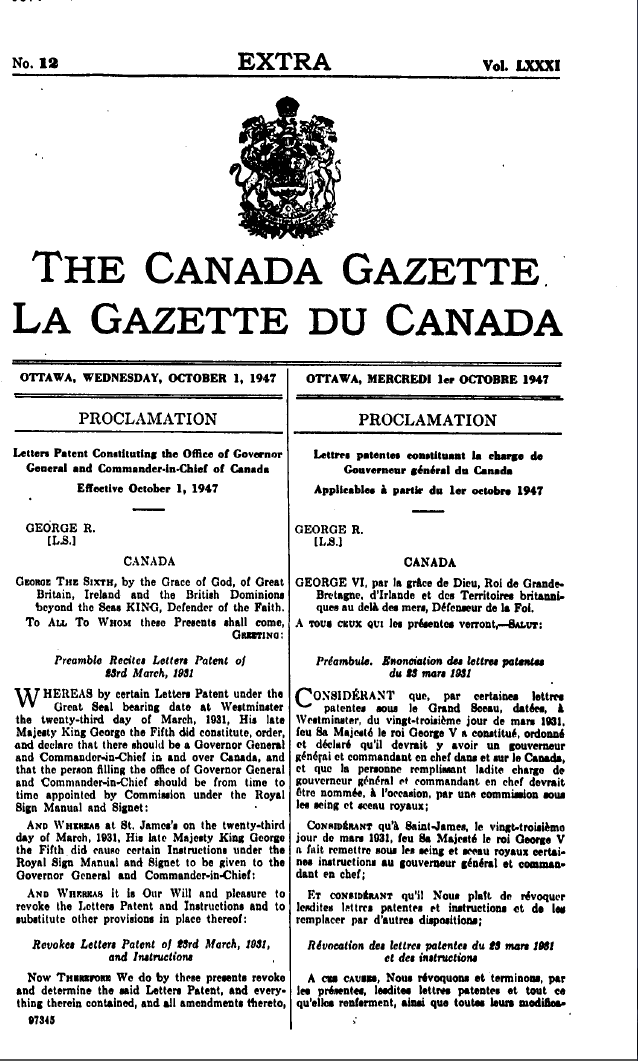|
Tomb Of The Unknown Soldier (Canada)
The Tomb of the Unknown Soldier (French: ''Tombe du Soldat Inconnu'') is a tomb situated before the National War Memorial in Confederation Square, Ottawa, Ontario. The tomb is dedicated to Canadian service members, and holds the remains of an unidentified Canadian soldier who died in France during the First World War; selected from a Commonwealth War Grave near Vimy, in the vicinity where the Battle of Vimy Ridge took place. A tomb with an unidentified soldier was added to the National War Memorial in 2000, the culmination of a project begun by the Royal Canadian Legion. Since 2007, the Canadian Armed Forces have posted sentries at the tomb, and the National War Memorial, from April to November. Unknown soldier At the request of the Royal Canadian Legion, the Canadian government became part of the project of creating a tomb of the unknown soldier for Canada, as part of the Canada Millennium Partnership Program. The Cabinet asked the Commonwealth War Graves Commission to select ... [...More Info...] [...Related Items...] OR: [Wikipedia] [Google] [Baidu] |
Confederation Square
Confederation Square (french: Place de la Confédération) is an urban square in Ottawa, Ontario, Canada, and is considered the second most important ceremonial centre in Canada's capital city, after Parliament Hill. Roughly triangular in area, with Canada's National War Memorial at its centre and the Valiants Memorial at its periphery, the square is bounded by Wellington Street to the north and branches of Elgin Street to the east and west. The square was designated a National Historic Site of Canada in 1984. Confederation Square's importance is due not only to its central location in Ottawa and its status as a rare Canadian example of a City Beautiful-inspired square, but also arises from the landmark buildings that frame the square: the Château Laurier, the Senate of Canada Building, the National Arts Centre, the Central Chambers, the Scottish Ontario Chambers, the Central Post Office, the PMO and the East Block. Part of the square crosses over the Rideau Canal, itse ... [...More Info...] [...Related Items...] OR: [Wikipedia] [Google] [Baidu] |
Canadian Forces
} The Canadian Armed Forces (CAF; french: Forces armées canadiennes, ''FAC'') are the unified military forces of Canada, including sea, land, and air elements referred to as the Royal Canadian Navy, Canadian Army, and Royal Canadian Air Force. Personnel may belong to either the Regular Force or the Reserve Force, which has four sub-components: the Primary Reserve, Supplementary Reserve, Cadet Organizations Administration and Training Service, and the Canadian Rangers. Under the '' National Defence Act'', the Canadian Armed Forces are an entity separate and distinct from the Department of National Defence (the federal government department responsible for administration and formation of defence policy), which also exists as the civilian support system for the Forces. The Canadian Armed Forces are a professional volunteer force that consists of approximately 68,000 active personnel and 27,000 reserve personnel, increasing to 71,500 and 30,000 respectively under "Strong, Secure ... [...More Info...] [...Related Items...] OR: [Wikipedia] [Google] [Baidu] |
Canadian War Museum
The Canadian War Museum (french: link=no, Musée canadien de la guerre; CWM) is a national museum on the country's military history in Ottawa, Ontario, Canada. The museum serves as both an educational facility on Canadian military history, in addition to serving as a place of remembrance. The museum building is situated south of the Ottawa River in LeBreton Flats. The museum houses a number of exhibitions and memorials, in addition to a cafeteria, theatre, curatorial and conservation spaces, as well as storage space. The building also houses the Military History Research Centre, the museum's library and archives. The Canadian War Museum was formally established in 1942, although portions of the museum's collections originate from a military museum that operated from 1880 to 1896. The museum was operated by the Public Archives of Canada until 1967, when the National Museums of Canada Corporation was formed to manage several national institutions, including the war museum. In ... [...More Info...] [...Related Items...] OR: [Wikipedia] [Google] [Baidu] |
Silver Maple
''Acer saccharinum'', commonly known as silver maple, creek maple, silverleaf maple, soft maple, large maple, water maple, swamp maple, or white maple, is a species of maple native to the eastern and central United States and southeastern Canada. It is one of the most common trees in the United States. Although the silver maple's Latin name is similar, it should not be confused with ''Acer saccharum'', the sugar maple. Some of the common names are also applied to other maples, especially ''Acer rubrum''. Description The silver maple tree is a relatively fast-growing deciduous tree, commonly reaching a height of , exceptionally . Its spread will generally be wide. A 10-year-old sapling will stand about tall. It is often found along waterways and in wetlands, leading to the colloquial name "water maple". It is a highly adaptable tree, although it has higher sunlight requirements than other maple trees. The leaves are simple and palmately veined, long and broad, with deep an ... [...More Info...] [...Related Items...] OR: [Wikipedia] [Google] [Baidu] |
Military Funeral
A military funeral is a memorial or burial rite given by a country's military for a soldier, sailor, marine or airman who died in battle, a veteran, or other prominent military figures or heads of state. A military funeral may feature guards of honor, the firing of volley shots as a salute, drumming and other military elements, with a flag draping over the coffin. Canada Canadian military funerals involve many rituals seen in other parts of the world. The Royal Canadian Horse Artillery use a 25-pounder gun and limber as the funeral vehicle. Muffled drums accompany the graveside processional. The deceased's headdress, insignia and medals are borne on a velvet cushion into the funeral service. Volleys are fired over the grave when the body is interred. Countries in the Commonwealth duplicate the British military drill and ceremony. The Canadian funeral described above typifies the funerary service. The bugle tune ''Last Post'' is played as the body is interred. Chile In ... [...More Info...] [...Related Items...] OR: [Wikipedia] [Google] [Baidu] |
Jean Chrétien
Joseph Jacques Jean Chrétien (; born January 11, 1934) is a Canadian lawyer and politician who served as the 20th prime minister of Canada from 1993 to 2003. Born and raised in Shawinigan Falls, Quebec, Chrétien is a law graduate from Université Laval. A Liberal, he was first elected to the House of Commons in 1963. He served in various cabinet posts under Prime Minister Pierre Trudeau, most prominently as minister of Indian affairs and northern development, president of the Treasury Board, minister of finance, and minister of justice. He ran unsuccessfully for the leadership of the Liberal Party in 1984, losing to John Turner. Chrétien served as the second deputy prime minister of Canada in Turner's short-lived government which would be defeated in the 1984 federal election. After Turner led the Liberals to their second defeat at the polls in 1988, Chrétien became leader of the Liberals and leader of the Opposition in 1990, returning to politics after briefly worki ... [...More Info...] [...Related Items...] OR: [Wikipedia] [Google] [Baidu] |
Prime Minister Of Canada
The prime minister of Canada (french: premier ministre du Canada, link=no) is the head of government of Canada. Under the Westminster system, the prime minister governs with the Confidence and supply, confidence of a majority the elected House of Commons of Canada, House of Commons; as such, the prime minister typically sits as a Member of Parliament (Canada), member of Parliament (MP) and leads the largest party or a coalition of parties. As List of current Canadian first ministers, first minister, the prime minister selects ministers to form the Cabinet of Canada, Cabinet, and serves as its chair. Constitutionally, Government of Canada#Crown, the Crown exercises Executive (government), executive power on the Advice (constitutional law), advice of the Cabinet, which is collectively Responsible government, responsible to the House of Commons. Justin Trudeau is the List of prime ministers of Canada, 23rd and current prime minister of Canada. He took office on November 4, 2015 ... [...More Info...] [...Related Items...] OR: [Wikipedia] [Google] [Baidu] |
John Ralston Saul
John Ralston Saul (born June 19, 1947) is a Canadian writer, political philosopher, and public intellectual. Saul is most widely known for his writings on the nature of individualism, citizenship and the public good; the failures of manager-led societies; the confusion between leadership and managerialism; military strategy, in particular irregular warfare; the role of freedom of speech and culture; and critiques of the prevailing economic paradigm. He is a champion of freedom of expression and was the International President of PEN International, an association of writers. Saul is the co-founder and co-chair of the Institute for Canadian Citizenship, a national charity promoting the inclusion of new citizens. He is also the co-founder and co-chair of 6 Degrees, the global forum for inclusion. Saul is also the husband to the former governor general Adrienne Clarkson, making him the Viceregal consort of Canada during most of her service (1999–2005). His work is known for bei ... [...More Info...] [...Related Items...] OR: [Wikipedia] [Google] [Baidu] |
Adrienne Clarkson
Adrienne Louise Clarkson (; ; born February 10, 1939) is a British Hong Kong, Hong Kong-born Canadian journalist who served from 1999 to 2005 as Governor General of Canada, the List of Governors General of Canada#Governors General of Canada, 1867–present, 26th since Canadian Confederation. Clarkson arrived in Canada with her family in 1941, as a refugee from Japanese occupation of Hong Kong, Japanese-occupied Hong Kong, and was raised in Ottawa. After receiving a number of university degrees, Clarkson worked as a producer and broadcaster for the Canadian Broadcasting Corporation (CBC) and a journalist for various magazines. Her first diplomatic posting came in the early 1980s, when she promoted Ontario, Ontarian culture in France and other European countries. In 1999, she was appointed Governor General of Canada, Governor General by Queen Elizabeth II, on the recommendation of Prime Minister of Canada Jean Chrétien, to replace Roméo LeBlanc as viceroy, a post which she occu ... [...More Info...] [...Related Items...] OR: [Wikipedia] [Google] [Baidu] |
Governor General Of Canada
The governor general of Canada (french: gouverneure générale du Canada) is the federal viceregal representative of the . The is head of state of Canada and the 14 other Commonwealth realms, but resides in oldest and most populous realm, the United Kingdom. The , on the advice of Canadian prime minister, appoints a governor general to carry on the Government of Canada in the 's name, performing most of constitutional and ceremonial duties. The commission is for an indefinite period—known as serving ''at Majesty's pleasure''—though five years is the usual length of time. Since 1959, it has also been traditional to alternate between francophone and anglophone officeholders—although many recent governors general have been bilingual. The office began in the 17th century, when the French crown appointed governors of the colony of Canada. Following the British conquest of the colony, the British monarch appointed governors of the Province of Quebec (later the Canadas) ... [...More Info...] [...Related Items...] OR: [Wikipedia] [Google] [Baidu] |
Royal Canadian Mounted Police
The Royal Canadian Mounted Police (RCMP; french: Gendarmerie royale du Canada; french: GRC, label=none), commonly known in English as the Mounties (and colloquially in French as ) is the federal police, federal and national police service of Canada. As police services are the constitutional responsibility of provinces and territories of Canada, the RCMP's primary responsibility is the enforcement of federal criminal law, and sworn members of the RCMP have jurisdiction as a Law enforcement officer, peace officer in all provinces and territories of Canada.Royal Canadian Mounted Police Act', RSC 1985, c R-10, s 11.1. However, the service also provides police services under contract to eight of Canada's Provinces and territories of Canada#Provinces, provinces (all except Ontario and Quebec), all three of Canada's Provinces and territories of Canada#Territories, territories, more than 150 municipalities, and 600 Indigenous peoples in Canada, Indigenous communities. In addition to en ... [...More Info...] [...Related Items...] OR: [Wikipedia] [Google] [Baidu] |
Parliament Hill
Parliament Hill (french: Colline du Parlement, colloquially known as The Hill, is an area of Crown land on the southern banks of the Ottawa River in downtown Ottawa, Ontario, Canada. Its Gothic revival suite of buildings, and their architectural elements of national symbolic importance, is the home of the Parliament of Canada. Parliament Hill attracts approximately three million visitors each year. Law enforcement on Parliament Hill and in the parliamentary precinct is the responsibility of the Parliamentary Protective Service (PPS). Originally the site of a military base in the 18th and early 19th centuries, development of the area into a governmental precinct began in 1859, after Queen Victoria chose Ottawa as the Capital city, capital of the Province of Canada. Following several extensions to the parliament and departmental buildings and a fire in 1916 that destroyed the Centre Block, Parliament Hill took on its present form with the completion of the Peace Tower in 1927. S ... [...More Info...] [...Related Items...] OR: [Wikipedia] [Google] [Baidu] |






.jpg)



